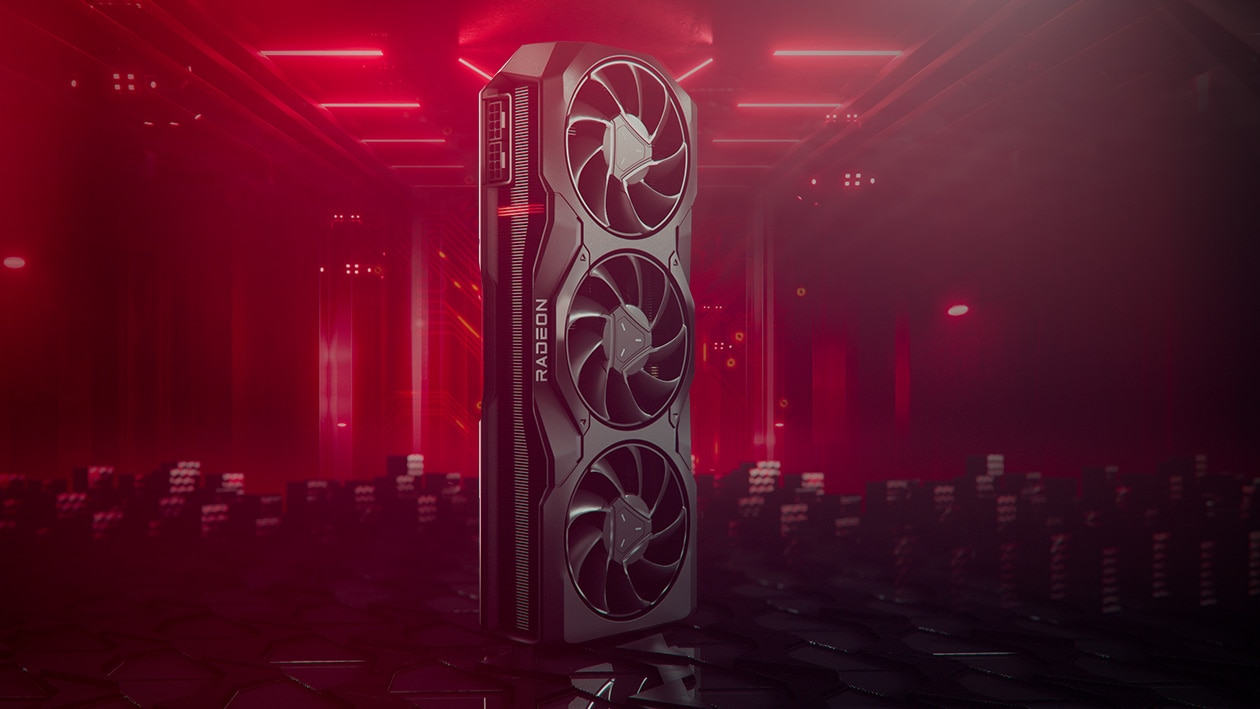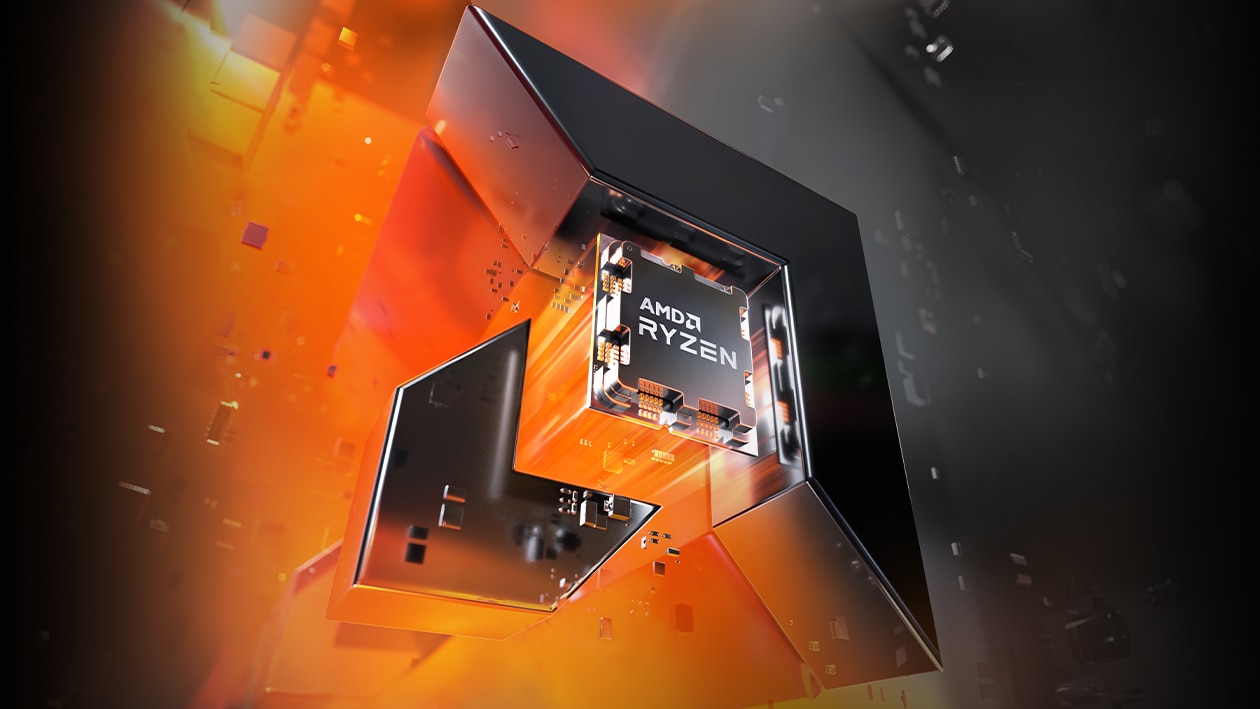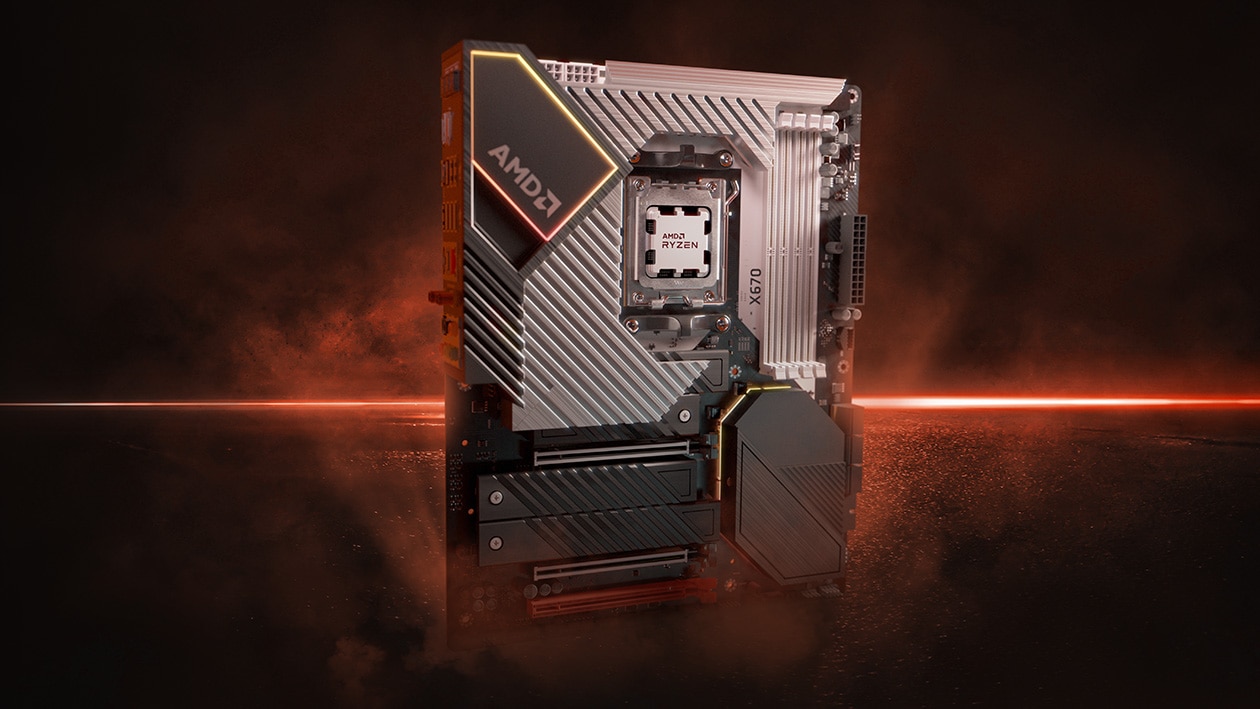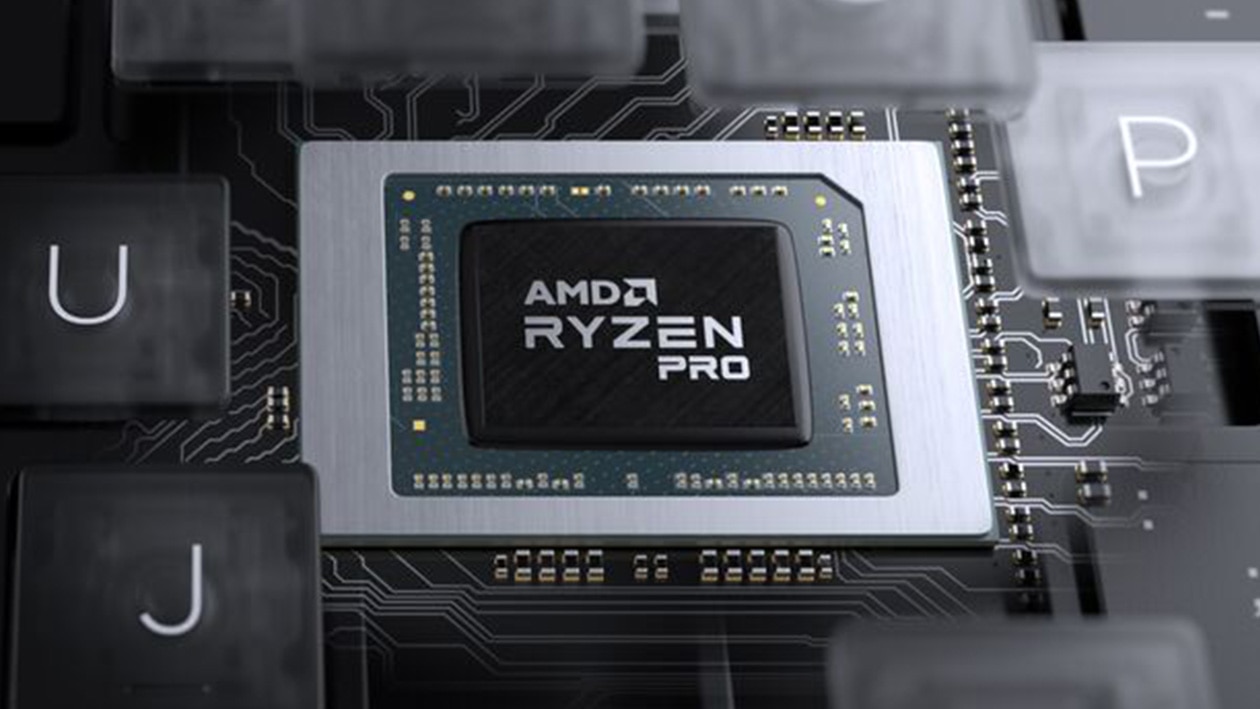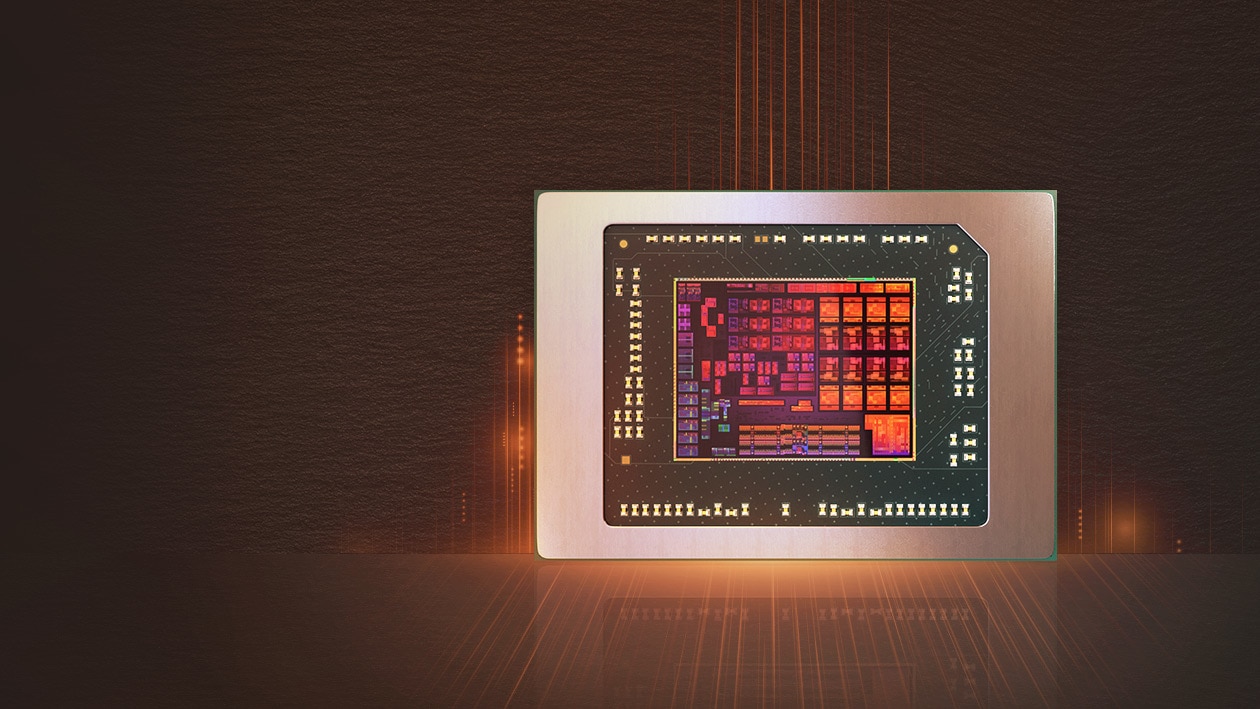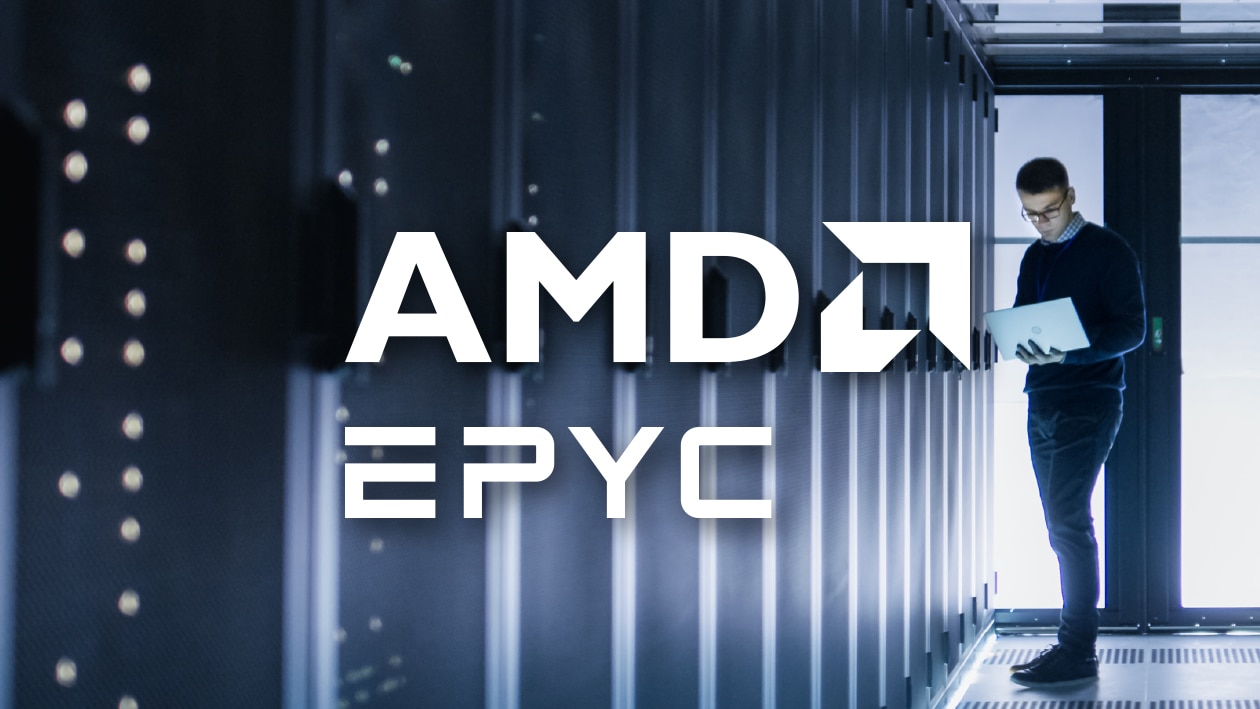From Endpoints to Cloud: AMD Enables the Full Spectrum
Generative AI is transforming the way enterprise customers operate. In fact, AI is quickly becoming a part of nearly every business process, from customer service to data analytics; and that deepening integration is expected to grow exponentially. At this stage, AI-fueled transformation is a business imperative, with AI integration ushering in a new era for the enterprise: redefining workloads and processes, and adding new requirements to existing infrastructure that often strain current hardware configurations.
If customers want to enjoy seamless AI experiences with productivity benefits immediately and over the long term, they need help evolving their IT infrastructure. That’s where AMD technologies come in, offering enterprises the performance and efficiency to operate existing workflows alongside the new possibilities that AI brings to the table.
Opening the World of AI and Virtualization with AMD EPYC™ Processors
AMD EPYC™ processors are trusted to power approximately one third of the world’s servers, and for good reason.1 Offering the world’s best data center CPU to enterprise customers, 5th Gen AMD EPYC processors provide up to 192 cores that deliver AI leadership technology, empowering today’s most demanding enterprise applications.2
AMD high-performance CPUs provide a strong option for companies deploying AI workloads such as recommendation systems, machine-learning solutions, and other generative AI uses.
Leveraging proven, standard infrastructure combined with upgrading to powerful AMD EPYC processors helps customers to keep server footprint, power, and initial expenditure low, and can increase server performance and density—helping to improve ROI and put more capacity for AI within reach.
AMD EPYC processors help customers not only with their AI workloads, but also in consolidating and reducing the physical server footprint when it comes to virtualization needs, in some instances reducing hardware costs by up to 33%3 and in other cases slashing licensing costs by up to 42%4; they offer high performance and core density, helping reduce growing per-core virtual machine (VM) licensing costs. Instead of multiple aging cores running few VMs, single modern AMD EPYC CPU cores can run scores of VMs without issue.
Customers like DBS Bank and Emirates NBD are already benefiting from the benefits AMD server processors provide:
Learn more about AMD EPYC™ processors.
Accelerating AI with AMD Instinct™ Accelerators
Large AI workloads and use cases may require more than what AMD EPYC™ CPUs can do alone. Large language models continue to grow into the hundreds of billions—even trillions—of parameters.
Fortunately, AMD offers a range of workload engines to handle the most demanding AI tasks. Extending how AI workloads are managed effectively by AMD EPYC processors, new levels of GPU acceleration are possible thanks to AMD Instinct™ accelerators. Where AMD server CPUs are highly efficient for small to medium models and mixed workload inference deployments, AMD accelerators are purpose-built for high-volume, real-time AI training, dedicated deployments, and large-scale real-time inference, accelerating AI results for enterprises.
AMD offers a range of GPU solutions for various performance levels and form factors, including the flagship AMD Instinct™ MI350X and MI355X accelerators, powered by the AMD ROCm™ software stack. Delivering a ~330% AI inference compute increase thanks to AMD ROCm™ 6 software, AMD accelerators stand ready to transform the way enterprises operate with AI workloads.5
AMD Instinct™ accelerators already power some of the world’s most demanding AI platforms—including Meta’s Llama 3.1 405B model, which ran exclusively on AMD GPUs for all live traffic at launch.6
With AMD ROCm™ enterprise-ready open-source software underpinning AMD acceleration, companies can quickly be up and running on AI workloads, with support for ~2 million Hugging Face models and deep engagements with other AI leaders including PyTorch and OpenAI.
Learn more about AMD Instinct™ Accelerators.
Bringing AI to Local Machines with AMD Ryzen™ Processors
AI doesn’t just operate in the data center; it’s now on end-user devices, enhancing the way people work and elevating traditional processes, making work faster and easier—leaving teams free to focus on the bigger picture.
Taiwanese Advanced Semiconductor Engineering Inc. (ASE), a leading company in testing and assembly of computer chip packages, opted for AMD Ryzen™ CPUs due to their leadership AI performance and efficiency. The company’s recent upgrade resulted in improved data conversion and graphic rendering rates for its most intensive workloads, as well as increased productivity on client PCs by as much as 30%.
AMD Ryzen™ PRO processors are the world’s most advanced, ultra power-efficient processors for business desktops7 and delivered the first integrated AI engine in an x86 processor.8 This level of AI enablement from servers to client devices brings incredible capabilities that simply weren’t possible previously.
Learn more about AMD Ryzen™ PRO processors.
Completing the Picture with AMD Versal™ Adaptive SoCs for Edge AI
But AI isn’t just for PCs and servers, either. There are many applications where local AI processing on edge devices can have a huge impact on performance and safety.
In automotive, AI at the edge can enhance safety by allowing sensor data to be processed locally so decisions can be made in real time. You don’t want your autonomous vehicle to wait for data to be processed in the cloud to decide if it should apply the brakes to avoid an accident.
In healthcare, AI at the edge can enhance imaging equipment to accelerate diagnoses or provide real-time visualization to assist with surgeries. It can also help protect patient privacy by not having to send data through the cloud.
And in the industrial space, AI at the edge can help factory equipment run more safely and efficiently. AMD FPGAs and adaptive SoCs efficiently manage data pre-processing, inference, and post-processing for AI-driven and classic embedded systems, with its newest offering, the AMD Versal™ AI Edge Series Gen 2 adaptive SoC, handling all these functions a single chip.
With AMD Versal products, customers can bring AI into every aspect of their business, making existing consumer and industrial environments smarter and enabled with AI.
Learn more about AMD Versal™ Adaptive SoCs.
The benefits of AI are pervasive, and it’s becoming part of the fabric of modern computing. Businesses need to adapt and adopt innovative technologies like those from AMD if they want to take advantage of the benefits.
Whether you’re optimizing workloads in the cloud, on premises, or at the edge, the comprehensive AI portfolio by AMD delivers tailored solutions backed by open standards, ecosystem partnerships, and a roadmap designed for long-term innovation. If you’d like to learn more about AMD products and their support for the growing AI ecosystem, please contact your local representative, or visit AMD AI Solutions.
AMD Arena
Enhance your AMD product knowledge with training on AMD Ryzen™ PRO, AMD EPYC™, AMD Instinct™, and more.
Subscribe
Get monthly updates on AMD’s latest products, training resources, and Meet the Experts webinars.

Related Articles
Related Training Courses
Related Webinars
Footnotes
- EPYC-055: Mercury Research Sell-In Revenue Shipment Estimates, Q1 2025. Revenue share of 39.4%, unit share of 27.2%.
- EPYC-029D: Comparison based on thread density, performance, features, process technology and built-in security features of currently shipping servers as of 10/10/2024. EPYC 9005 series CPUs offer the highest thread density, leads the industry with 500+ performance world records including world record enterprise leadership Java® ops/sec performance, top HPC leadership with floating-point throughput performance, AI end-to-end performance with TPCx-AI performance and highest energy efficiency scores. Compared to 5th Gen Xeon, the 5th Gen EPYC series also has more DDR5 memory channels with more memory bandwidth and supports more PCIe® Gen5 lanes for I/O throughput, and has up to 5x the L3 cache/core for faster data access. The EPYC 9005 series uses advanced 3-4nm technology, and offers Secure Memory Encryption + Secure Encrypted Virtualization (SEV) + SEV Encrypted State + SEV-Secure Nested Paging security features. For additional details, see https://www.amd.com/en/legal/claims/epyc.html#q=#029D.
- SP5TCO-073A: As of 06/18/2024, this scenario contains many assumptions and estimates and, while based on AMD internal research and best approximations, should be considered an example for information purposes only, and not used as a basis for decision making over actual testing. The Server Refresh & Greenhouse Gas Emissions TCO (total cost of ownership) Estimator Tool compares the selected AMD EPYC™ and Intel® Xeon® CPU based server solutions required to deliver a TOTAL_PERFORMANCE of ~9020 units of VMmark3 matched pair performance based on the published scores (or estimated if indicated by an asterisk) for Intel Xeon and AMD EPYC CPU based servers. This estimation reflects a 5-year time frame. This analysis compares a 2P AMD 48 core EPYC_9474F powered server with a VMmark 3.1 score of 26.95 @ 26 tiles, https://www.vmware.com/docs/2024-05-14-supermicro-as-2125hs-tnr compared to a 2P Intel Xeon 64 core Platinum_8592+ based server with a VMmark 3.1 score of 27.52 @ 28 tiles, https://www.vmware.com/docs/2024-04-16-fujitsu-primergy-rx2540m7. Results generated by: AMD EPYC™ Server Refresh & Greenhouse Gas Emission TCO Estimation Tool - version 1.51 PRO. VMmark is a registered trademark of VMware in the US or other countries. For additional details, see https://www.amd.com/en/legal/claims/epyc.html#q=%23SP5TCO-073A.
- https://www.amd.com/content/dam/amd/en/documents/epyc-business-docs/white-papers/modernize-data-center-virtualization-with-amd-epyc-processors.pdf
- MI350-044: Based on AMD internal testing as of 6/9/2025. Using 8 GPU AMD Instinct™ MI355X Platform measuring text generated online serving inference throughput for Llama 3.1-405B chat model (FP4) compared 8 GPU AMD Instinct™ MI300X Platform performance with (FP8). Test was performed using input length of 32768 tokens and an output length of 1024 tokens with concurrency set to best available throughput to achieve 60ms on each platform, 1 for MI300X (35.3ms) and 64ms for MI355X platforms (50.6ms). Server manufacturers may vary configurations, yielding different results. Performance may vary based on use of latest drivers and optimizations. MI350-044
- https://youtu.be/vJ8aEO6ggOs?t=3100
- GD-203: Based on a smaller node size of the AMD processor for an x86 platform, as of September 2023.
- PXD-03: As of January 2024, AMD has the first available dedicated AI engine on a desktop PC processor, where 'dedicated AI engine' is defined as an AI engine that has no function other than to process AI inference models and is part of the x86 processor die. For detailed information, please check: https://www.amd.com/en/products/processors/consumer/ryzen-ai.html.
- EPYC-055: Mercury Research Sell-In Revenue Shipment Estimates, Q1 2025. Revenue share of 39.4%, unit share of 27.2%.
- EPYC-029D: Comparison based on thread density, performance, features, process technology and built-in security features of currently shipping servers as of 10/10/2024. EPYC 9005 series CPUs offer the highest thread density, leads the industry with 500+ performance world records including world record enterprise leadership Java® ops/sec performance, top HPC leadership with floating-point throughput performance, AI end-to-end performance with TPCx-AI performance and highest energy efficiency scores. Compared to 5th Gen Xeon, the 5th Gen EPYC series also has more DDR5 memory channels with more memory bandwidth and supports more PCIe® Gen5 lanes for I/O throughput, and has up to 5x the L3 cache/core for faster data access. The EPYC 9005 series uses advanced 3-4nm technology, and offers Secure Memory Encryption + Secure Encrypted Virtualization (SEV) + SEV Encrypted State + SEV-Secure Nested Paging security features. For additional details, see https://www.amd.com/en/legal/claims/epyc.html#q=#029D.
- SP5TCO-073A: As of 06/18/2024, this scenario contains many assumptions and estimates and, while based on AMD internal research and best approximations, should be considered an example for information purposes only, and not used as a basis for decision making over actual testing. The Server Refresh & Greenhouse Gas Emissions TCO (total cost of ownership) Estimator Tool compares the selected AMD EPYC™ and Intel® Xeon® CPU based server solutions required to deliver a TOTAL_PERFORMANCE of ~9020 units of VMmark3 matched pair performance based on the published scores (or estimated if indicated by an asterisk) for Intel Xeon and AMD EPYC CPU based servers. This estimation reflects a 5-year time frame. This analysis compares a 2P AMD 48 core EPYC_9474F powered server with a VMmark 3.1 score of 26.95 @ 26 tiles, https://www.vmware.com/docs/2024-05-14-supermicro-as-2125hs-tnr compared to a 2P Intel Xeon 64 core Platinum_8592+ based server with a VMmark 3.1 score of 27.52 @ 28 tiles, https://www.vmware.com/docs/2024-04-16-fujitsu-primergy-rx2540m7. Results generated by: AMD EPYC™ Server Refresh & Greenhouse Gas Emission TCO Estimation Tool - version 1.51 PRO. VMmark is a registered trademark of VMware in the US or other countries. For additional details, see https://www.amd.com/en/legal/claims/epyc.html#q=%23SP5TCO-073A.
- https://www.amd.com/content/dam/amd/en/documents/epyc-business-docs/white-papers/modernize-data-center-virtualization-with-amd-epyc-processors.pdf
- MI350-044: Based on AMD internal testing as of 6/9/2025. Using 8 GPU AMD Instinct™ MI355X Platform measuring text generated online serving inference throughput for Llama 3.1-405B chat model (FP4) compared 8 GPU AMD Instinct™ MI300X Platform performance with (FP8). Test was performed using input length of 32768 tokens and an output length of 1024 tokens with concurrency set to best available throughput to achieve 60ms on each platform, 1 for MI300X (35.3ms) and 64ms for MI355X platforms (50.6ms). Server manufacturers may vary configurations, yielding different results. Performance may vary based on use of latest drivers and optimizations. MI350-044
- https://youtu.be/vJ8aEO6ggOs?t=3100
- GD-203: Based on a smaller node size of the AMD processor for an x86 platform, as of September 2023.
- PXD-03: As of January 2024, AMD has the first available dedicated AI engine on a desktop PC processor, where 'dedicated AI engine' is defined as an AI engine that has no function other than to process AI inference models and is part of the x86 processor die. For detailed information, please check: https://www.amd.com/en/products/processors/consumer/ryzen-ai.html.


